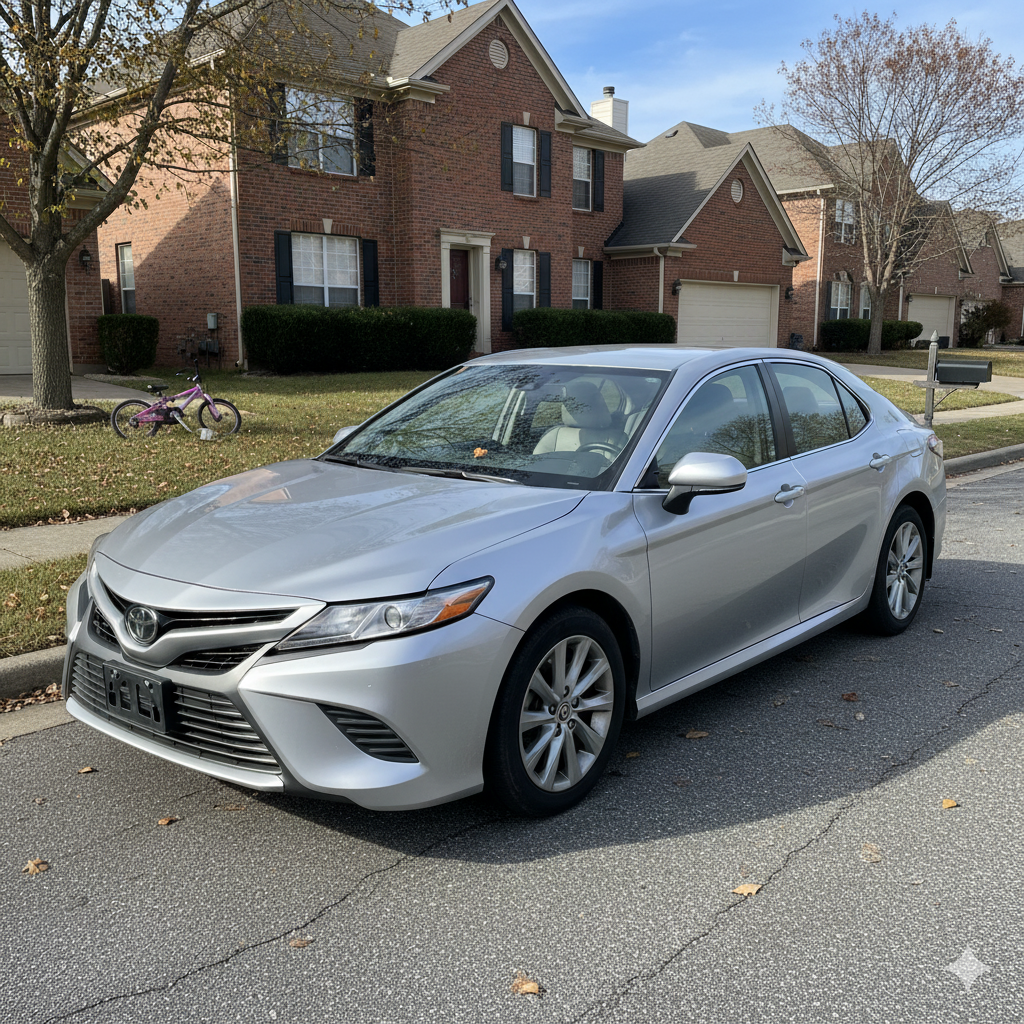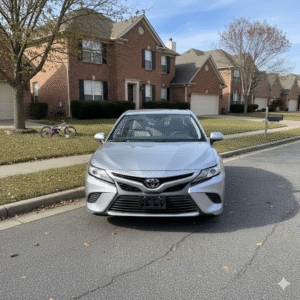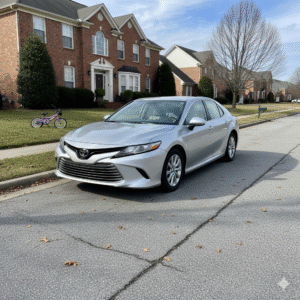Learn how car insurance works

For most Americans, buying car insurance is a routine part of owning a vehicle. We know we need it, it’s required by law, and we pay for it every month or year. But what are we actually buying? For many, the moment they truly understand their auto insurance policy is after an accident—often, the worst possible time to learn the details.
Imagine this: You’re in a minor fender bender. Your car is damaged, the other driver’s car is damaged, and you’re both a little shaken up. You exchange information and call your insurance company. Suddenly, you’re bombarded with terms you’ve heard but never fully understood: deductible, liability, collision coverage, premium, claim adjuster. It can feel like trying to learn a new language on the side of a busy highway.
The truth is, car insurance doesn’t have to be that complicated. At its core, it’s a financial safety net designed to protect you from potentially devastating expenses. This guide will break down exactly how it works, piece by piece, in plain English. We’ll demystify the jargon and explain the concepts so you can be a confident, informed consumer and make sure you have the right protection for your needs, long before you ever need to use it.
The Core Concept: What Is Car Insurance and Why Is It Legally Required?

At its simplest, car insurance is a contract between you and an insurance company. You agree to pay a regular fee, called a premium, and in exchange, the company agrees to pay for specific car-related financial losses as outlined in your policy.
Think of it as a “risk-sharing” system. You and millions of other drivers pay into a large pool of money. When a driver in that pool has an accident, the insurance company uses money from the pool to pay for the damages. This prevents any single person from having to bear the full, and often crippling, cost of a major accident on their own.
But why is it mandatory? Nearly every state requires drivers to carry a minimum amount of auto insurance. This isn’t to protect you or your car—it’s to protect other people. This mandatory coverage is called liability insurance. If you cause an accident that injures someone else or damages their property, your liability coverage pays for their expenses. This ensures that victims of an accident you cause aren’t left with massive medical bills and repair costs they can’t afford. Driving without it can lead to hefty fines, license suspension, and significant personal financial risk.
Decoding Your Policy: The 6 Main Types of Car Insurance Coverage
A car insurance policy isn’t a single product; it’s a bundle of different coverages, each protecting you from a different type of risk. Understanding these building blocks is the key to choosing the right policy.
1. Bodily Injury Liability (BI)
This is the cornerstone of your policy and is legally required in most states. If you are at fault in an accident, this coverage pays for the medical expenses, lost wages, and pain and suffering of the other people you injure. It does not cover your own injuries.
2. Property Damage Liability (PD)
This is the other legally required component. It pays for the damage you cause to someone else’s property. This most often means the other person’s car, but it also covers damage to things like buildings, fences, or mailboxes.
When you see liability limits written as something like 50/100/25, it translates to:
- $50,000 for bodily injury per person.
- $100,000 for bodily injury per accident.
- $25,000 for property damage per accident.
3. Collision Coverage
This is the first major type of coverage for your own vehicle. Collision coverage pays to repair or replace your car if it’s damaged in a collision with another object. This includes an accident with another car (regardless of fault), or if you hit a stationary object like a telephone pole or a guardrail. If your car is older and has a low market value, you might consider skipping this coverage to save money.
4. Comprehensive Coverage (Other Than Collision)
This is the second type of coverage for your own vehicle. Comprehensive pays for damage to your car from events other than a collision. It’s the safety net for life’s unexpected moments. Common covered events include:
- Theft and vandalism
- Fire
- Falling objects (like a tree branch)
- Storms, hail, floods, and other natural disasters
- Hitting an animal (e.g., a deer)
Like collision, this coverage is optional unless you have a loan or lease on your vehicle, in which case the lender will require you to carry it.
5. Uninsured/Underinsured Motorist Coverage (UM/UIM)
What happens if you’re hit by someone who has no insurance, or not enough insurance to cover your bills? That’s where this crucial coverage steps in. It protects you by paying for your medical expenses and, in some states, car repairs if you’re the victim of a hit-and-run or are in an accident caused by an uninsured or underinsured driver.
6. Medical Payments (MedPay) / Personal Injury Protection (PIP)
This coverage helps pay for your and your passengers’ medical expenses after an accident, regardless of who was at fault.
- MedPay is available in most states and typically covers medical and funeral expenses up to a set limit.
- PIP is required in “no-fault” states and is more extensive. In addition to medical bills, it can also help cover lost wages and other non-medical costs.
Key Insurance Terms Explained: Deductibles and Premiums

Understanding your coverage is half the battle. The other half is understanding how you pay for it. Two terms are central to this: premium and deductible.
What is a Premium?
Your premium is the regular payment you make to the insurance company to keep your policy active. You can typically choose to pay it monthly, quarterly, semi-annually, or annually. This price is calculated based on how much risk the insurer believes you represent. Factors like your driving record, age, location, the car you drive, and the coverages you select all influence your premium. A safe driver with a modest car will pay a much lower premium than a driver with multiple speeding tickets and a high-performance sports car.
What is a Deductible?
Your deductible is the amount of money you must pay out-of-pocket for a claim on your own vehicle before the insurance company starts to pay. Deductibles typically apply to collision and comprehensive coverage.
Here’s a simple example:
You have a collision policy with a $1,000 deductible. You back into a pole, causing $4,000 in damage to your car.
- You are responsible for paying the first $1,000 of the repair bill.
- Your insurance company will pay the remaining $3,000.
You can choose your deductible amount, usually ranging from $250 to $2,500. There’s a direct trade-off:
- A higher deductible means you’ll pay more out-of-pocket if you have an accident, but it will result in a lower monthly premium.
- A lower deductible means your out-of-pocket costs will be smaller after an accident, but you’ll have a higher monthly premium.
Choosing a deductible you can comfortably afford in an emergency is a key part of managing your financial risk.
The Claims Process: What Happens After an Accident?
Knowing how to use your insurance is just as important as having it. If you’re in an accident, the process generally follows these steps:
- Immediate Aftermath: First, ensure everyone is safe and call 911 if there are injuries. Exchange contact and insurance information with the other driver and take detailed photos of the scene and vehicle damage.
- File a Claim: Contact your insurance company as soon as possible to report the incident. This is known as “opening a claim.” You’ll provide the details of what happened, the other driver’s information, and any police report number.
- The Investigation: The insurance company will assign a claims adjuster to your case. Their job is to investigate the accident to determine fault, assess the extent of the damages, and figure out how much the insurance company is obligated to pay under your policy. They may interview you, the other driver, and any witnesses.
- Damage Appraisal: The adjuster or an appraiser will inspect your vehicle’s damage to estimate the cost of repairs. They may have you take it to an approved auto body shop or conduct a virtual inspection through photos and video.
- Settlement and Repairs: Once the investigation is complete and the repair costs are approved, the insurance company will issue payment. They may pay the body shop directly or send a check to you. If your car is declared a “total loss” (meaning the cost to repair it is more than its actual cash value), the insurer will pay you the car’s value, minus your deductible.
Why Do Car Insurance Rates Change and How Can You Save Money?

Your insurance premium isn’t set in stone. It’s a dynamic price based on a complex risk assessment. Understanding these factors can empower you to find significant savings.
Major Factors That Influence Your Premium:
- Your Driving Record: This is the big one. A clean record with no accidents or violations will get you the best rates. Speeding tickets, DUIs, and at-fault accidents will cause your premium to skyrocket.
- Your Location (ZIP Code): Insurers track claim data by location. Urban areas with more traffic, theft, and vandalism have higher rates than rural areas.
- Your Age and Gender: Statistically, younger drivers (especially teenagers) are involved in more accidents, so they pay much higher rates. These rates tend to decrease after age 25.
- The Car You Drive: The make, model, and year of your car matter. A brand-new sports car is more expensive to repair or replace than an older, economy sedan, so it costs more to insure. Safety features like airbags and anti-lock brakes can help lower your costs.
- Your Credit History: In most states, insurers use a credit-based insurance score to help predict risk. Studies have shown a correlation between credit history and the likelihood of filing a claim. A better credit history can lead to lower premiums.
- Your Coverage Choices: The more coverage you buy and the lower your deductibles, the higher your premium will be.
Actionable Tips for Lowering Your Car Insurance Bill:
- Shop Around: This is the most effective way to save. Get quotes from at least three to five different insurance companies before you buy or renew. Prices for the exact same coverage can vary by hundreds of dollars.
- Ask for Discounts: Insurers offer a huge variety of discounts. Common ones include good student discounts, safe driver discounts, multi-policy discounts (bundling auto with home or renters insurance), and discounts for having safety features in your car.
- Increase Your Deductible: If you have a healthy emergency fund, raising your deductible from $500 to $1,000 can lower your premium by 15% to 30%.
- Maintain a Good Driving Record: The longer you go without an accident or ticket, the better your rates will be.
- Choose Your Car Wisely: Before you buy a new car, check the insurance costs. A sensible sedan will almost always be cheaper to insure than a flashy SUV or sports car.
Your Partner in Financial Protection

Car insurance can seem like a complex product filled with confusing rules and jargon. But at its heart, it’s a simple promise: in exchange for a predictable fee, a company will protect you from unpredictable and potentially life-altering expenses.
By understanding the basic types of coverage, how premiums and deductibles work, and what to do when you need to file a claim, you transform from a passive bill-payer into an empowered consumer. You can confidently build a policy that fits your specific needs and budget, ensuring that when the unexpected happens on the road, you have a powerful financial partner ready to help you get back on your feet.







